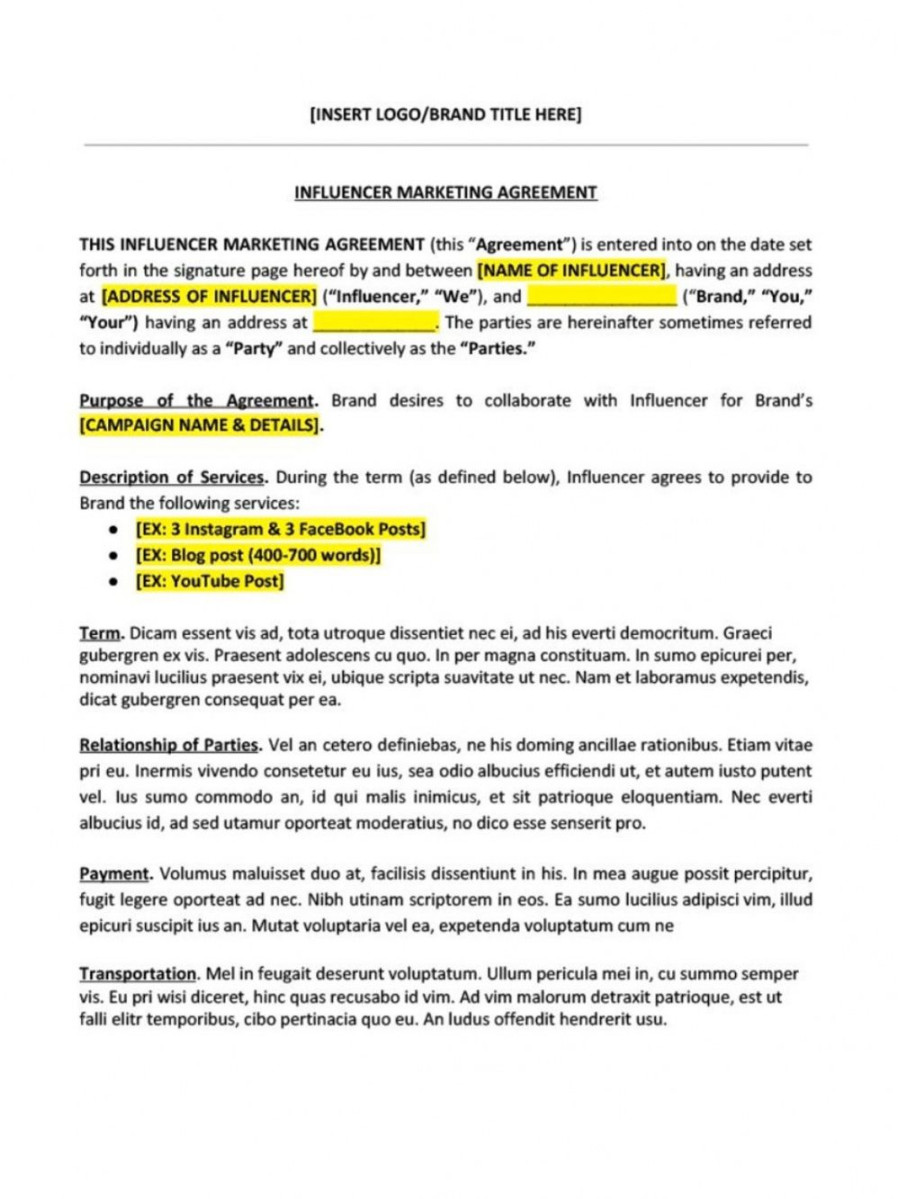Understanding the Importance of a Well-Drafted Brand Partnership Agreement
A brand partnership agreement is a legally binding document that outlines the terms and conditions of a collaborative venture between two or more brands. It serves as a roadmap for the partnership, ensuring that both parties are aligned on expectations, responsibilities, and benefits. A well-crafted agreement is essential for protecting the interests of all parties involved and preventing misunderstandings or disputes.

Key Components of a Brand Partnership Agreement Template
1. Parties Involved: Clearly identify the parties entering into the partnership. Include their full legal names, addresses, and contact information.
2. Purpose of the Partnership: Briefly describe the goals and objectives of the partnership. This will help define the scope of the collaboration and ensure that both parties are working towards a common vision.
3. Term of the Partnership: Specify the duration of the partnership. This can be a fixed term or a renewable agreement.
4. Rights and Responsibilities: Outline the specific rights and responsibilities of each party. This includes their obligations, deliverables, and decision-making authority.
5. Intellectual Property: Address the ownership and usage of intellectual property created or used during the partnership. This may include logos, trademarks, copyrights, and patents.
6. Confidentiality: Establish confidentiality obligations to protect sensitive information shared between the parties.
7. Payment and Compensation: Specify the payment terms, including fees, royalties, or other forms of compensation.
8. Termination: Outline the circumstances under which either party can terminate the partnership and the procedures for termination.
9. Dispute Resolution: Establish a mechanism for resolving disputes that may arise. This could include mediation, arbitration, or litigation.
10. Governing Law and Jurisdiction: Specify the governing law and jurisdiction for any legal disputes arising from the partnership.
Design Elements for a Professional Brand Partnership Agreement Template
1. Clear and Concise Language: Use clear and concise language that is easy to understand. Avoid legal jargon or technical terms that may be unfamiliar to the parties.
2. Consistent Formatting: Use consistent formatting throughout the template, including font, font size, spacing, and headings. This will improve readability and professionalism.
3. Professional Layout: Choose a professional layout that is visually appealing and easy to navigate. Use headings, subheadings, and bullet points to organize the content.
4. Branding Elements: Incorporate branding elements from both parties, such as logos or color schemes, to create a cohesive and professional look.
5. White Space: Use white space effectively to create a clean and uncluttered appearance. Avoid overcrowding the page with text.
6. Legal Disclaimer: Include a legal disclaimer at the end of the template to indicate that the agreement is a legal document and that professional legal advice should be sought.
Additional Considerations
Tailor the Template to Your Specific Needs: The template should be tailored to the specific circumstances of your partnership. Consider the unique aspects of your collaboration and adjust the agreement accordingly.
By following these guidelines and incorporating the key components of a brand partnership agreement template, you can create a professional and effective document that will serve as a solid foundation for your collaborative venture.


